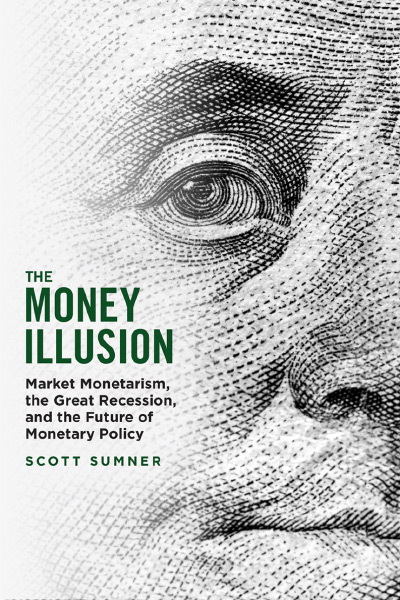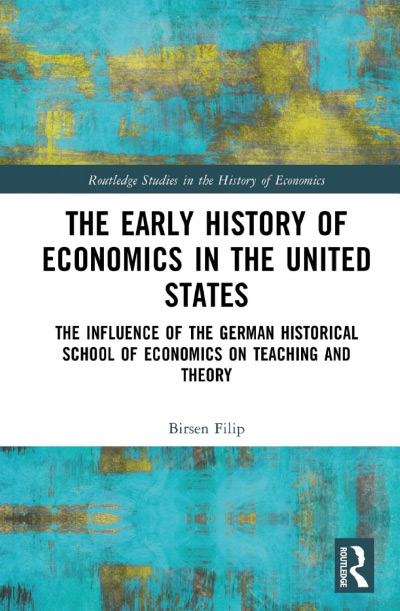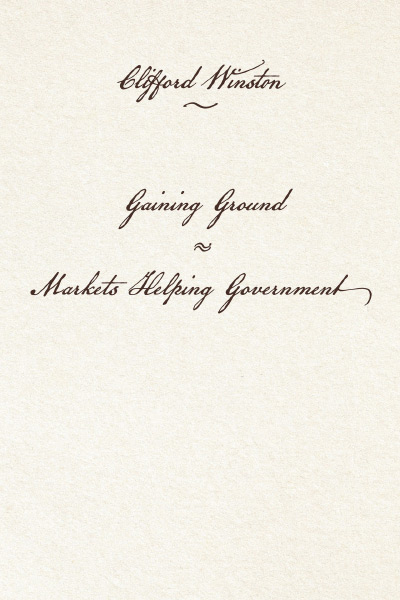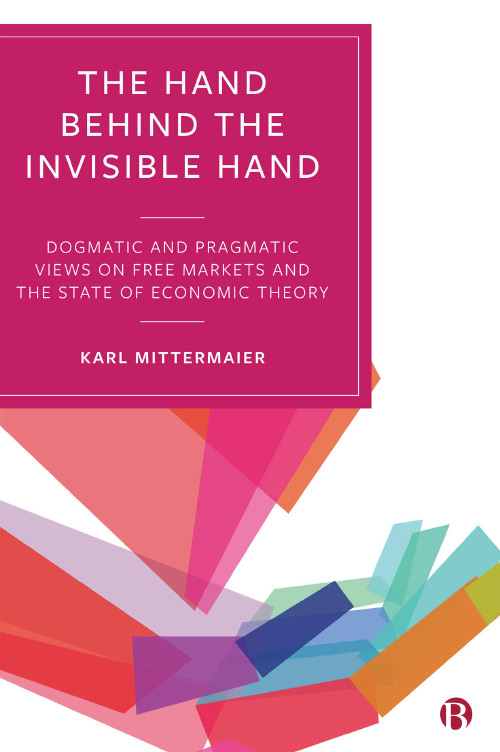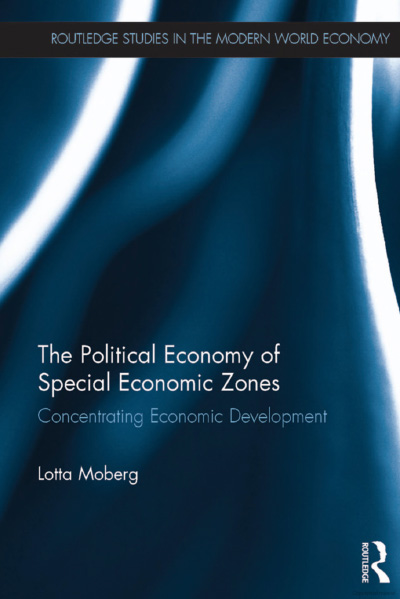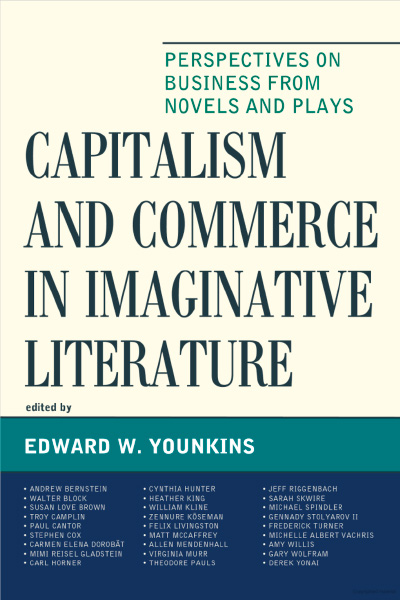It’s been eighteen years since the publication of Steven Levitt and Stephen Dubner’s Freakonomics (New York: William Morrow), and economists everywhere are still trying to write the next big “pop econ” book. We’ve all considered the question “if you could only give one book to someone to introduce them to economics, what would it be?” For advocates of the free market, the answer used to be clear: give them Henry Hazlitt’s Economics in One Lesson (2020 [1946], Auburn, Ala.: Ludwig von Mises Institute). The problem today is that the book is now dated, and none of the subsequent imitations are quite as good.
Still, excellent introductory books are written every year. Steven Horwitz’s Austrian Economics: An Introduction (2020, Washington, D.C.: Cato Institute) and James Otteson’s Seven Deadly Economic Sins (2021, New York: Cambridge University Press) are notable recent examples. Such books hit many similar beats—the role of the entrepreneur, economic calculation, the broken window fallacy, etc.—but approach the topics from different perspectives and are directed toward different audiences. These choices that address how to express the classical liberal worldview are a matter of taste that reflect the intellectual character of the author, and ultimately determine the success of the outcome. For an academic, reading these books feels how one rock band must feel watching another rock band perform Johnny B. Goode.
Per Bylund’s How to Think About the Economy: A Primer is the latest attempt in the genre. Bylund’s choices are interesting. His self-stated goal is to promote economic literacy with a primer that is short and unintimidating. The writing style is simple, clear, and minimizes technical jargon. There are very few footnotes or references. And it is written from an Austrian perspective that leans toward the Auburn rather than the George Mason camp.
The book consists of nine short chapters divided into three parts: 1. “Economics,” 2. “Market,” and 3. “Intervention.” The first chapter “What Economics Is” delineates the subject matter with such crystal-clarity that it gets the audience thinking maybe this is the definitive new introduction it has been waiting for. Economics is defined as the study of “human actions and interaction.” And its purpose is to explain how spontaneous orders of complex social phenomena arise from purposeful individual action. Bylund explodes the common misunderstanding of the economy “in terms of resources, machines, businesses, and perhaps jobs” (p. 15). The economy is rather how individuals pursuing their separate ends create subjective value.
Chapter 2, “Economic Theory,” explains how theory must be logically valid with true assumptions. Following Mises, Bylund points to the Action Axiom as the “starting point” of economic analysis—i.e., when people act, they try to achieve value. Bylund notes that economics uses methodological individualism and explains how economic value is subjective and determined marginally. From these starting points laws of economics are derived and used to understand economic phenomena like trade, prices, and business cycles.
In Chapter 3, “How to Do Economics,” Bylund swiftly dispels the notion that economics is ideological. He clarifies that economic laws are known deductively, and that the economic notions of value and price are inherent in the concept of action itself. He illustrates how voluntary exchange arises from a “double coincidence of wants” and makes both parties better off. Prices are simply exchange ratios that arise from voluntary trades and inform market participants of opportunities for future mutually advantageous trades. The highlight of the chapter is Bylund’s lucid explanation of what he dubs the “step-by-step method”: “To use proper economic reasoning we must walk through the logic step by step to fully take into account the changes that happen over time and in sequence” (p. 35). Bylund argues that theories which focus on movements of aggregate variables, such as the quantity theory of money, are often misleading; an increase in the money supply doesn’t increase the price of all goods by the same proportion. Therefore, how new money enters into and works through the economy can distort production.
Chapter 4 “A Process, Not a Factory” transitions to an analysis of the market economy. Bylund warns against viewing the economy as a factory with knobs to adjust. Rather, the market is a discovery process under uncertainty guided by entrepreneurs. Viewing the economy as a production process misconstrues the very nature of how economic value is created: “An economy comprises production processes, but those production processes are themselves selected: they are the ones that survived the constant weeding out of less value-creative production. Many of those surviving production processes will, in turn, be weeded out as new and more value-creative ones are attempted” (p. 47).
Chapter 5 on “Production and Entrepreneurship” presents an Austrian view of capital and entrepreneurship. Production is simply a means to overcome scarcity by making better use of our limited resources to satisfy our nearly unlimited wants. The value of productive inputs is imputed from the outputs: “a premium or luxury product is not more expensive to buy because it is produced using rare, expensive materials—it was produced using rare expensive materials because the good is more expensive to buy. Value determines cost, not the other way around” (p. 54, emphasis in the original). Capital is explained as the “efforts that create materials, tools, machines, etc. ... that enhance production and allow us to satisfy more and more varied wants more effectively. Together, all this capital is arranged into a productive structure” (p. 60). Entrepreneurs bear the risk and uncertainty inherent in production by making decisions about how to allocate capital. “In sum, entrepreneurs serve consumers by creating our future. They do this by trying ideas for new, imagined goods and, based on their expected value, paying wages to workers and developing new capital” (p. 66, emphasis in the original).
Chapter 6 on “Value, Money, and Price” explores the foundations of price theory. Bylund explains that economic value is subjective according to the ordinal preference ranking of each individual. Prices emerge as individuals trade some amount of one good for some amount of another, establishing an exchange ratio. Money then emerges out of barter as a commonly used medium of exchange and provides a unit of account that resolves the problem of different ordinal preference rankings. This allows for profit and loss accounting that makes greater division of labor and modern production possible. Bylund also alludes to the Misesian Regression Theorem, writing “unless something is already a money, people will not voluntarily accept it in exchange. So, it has no or little value before it is deemed money” (pp. 70–71). Here the importance of applying the Action Axiom deductively in a step-by-step method is made clear.
In chapter 7 on “Economic Calculation,” Bylund makes the important distinction between technological problems, which concern the properties of the natural world, and economic problems, which are concerned with value. Technological information can explain how certain resources can be combined to produce certain products. But technological knowledge alone is insufficient to solve the problem of how to combine resources in a way that creates the most value for individuals. The market economy finds a solution to the problem by allowing businesses and entrepreneurs to bid against each other for the use of resources based on their estimate of how much consumers will value their output. Entrepreneurs who fail are “mercilessly weeded out and have less capital to try again” (p. 99). The market process is at heart an entrepreneurial dynamic that “creates a “division of intellectual labor” where the best and brightest can try their ideas—and benefit consumers” (p. 99).
Chapter 8, “Monetary Intervention,” presents an easy introduction to Austrian Business Cycle Theory (ABCT). Bylund first explains why it is best to think of investments in terms of rates of return rather than dollar amounts. Next, examples are used to illustrate how lower interest rates make longer and more capital-intensive projects relatively more profitable. Bylund then argues that when banks create new money and lend it out, this artificially lowers interest rates and induces malinvestments, thereby setting a boom-and-bust business cycle into motion. Bylund provides a pretty good overview of ABCT, although we would quibble with his implied advocacy for 100-percent reserves instead of free banking.
In Chapter 9 Bylund discusses “Regulatory Intervention” with respect to the “seen and the unseen”—a clear nod to Frédéric Bastiat. Bylund provides an easy to understand example of the minimum wage to illustrate the two concepts and to show how government interventions into the market economy make individuals worse off. Bylund parses up Bastiat’s use of the seen and unseen consequences, which he says are in the present, then adds a third category of unrealized future consequences. As Bylund writes, “The unrealized are all those valuable opportunities that never come to be because of the regulation: the value of the goods that would have been produced, the trainee’s career, the workers’ demand for goods. The economy is on an overall lower-value trajectory, which means the loss is all the value that would have otherwise been attained” (pp. 128–129). There aren’t enough examples to adequately illustrate the generally counterproductive nature of government regulations. However, it is a good refresher for anyone already acquainted with Bastiat or Hazlitt.
Overall, How to Think about the Economy: A Primer is a clear and concise introduction to economics from the perspective of an Austrian economist. The consistency with which Bylund puts entrepreneurship at the forefront of the market process is a notable strength. This is unsurprising given that Bylund’s own research focus is on entrepreneurship. It is easy to imagine how a reader could become infected with Bylund’s worldview of value-creating entrepreneurs.
Of course, Bylund’s choice of focusing on brevity and simplicity has an opportunity cost. It means that in explaining important economic concepts—like methodological individualism, subjective value, economic calculation, and so on—there is no room to put the ideas in intellectual context and show how misunderstandings of these concepts have historically led to grave errors of economic policy. There is a “Further Reading” list at the end, which is nice, but it is disjointed from the text and the ideas of the great economists are sparingly brought in by name. For this reason, it isn’t the first book we would give to someone as an introduction to the classical liberal worldview. For that purpose—which isn’t really Bylund’s goal anyway—the best approach is to pick a book that bludgeons the reader over the head with government failure, like Economics in One Lesson, or that meets the reader at a higher political and philosophical level, like Milton Friedman’s Capitalism and Freedom (1962, Chicago: University of Chicago Press).
The beauty of what Bylund has accomplished is that his book serves a different purpose than the countless Freakonomics imitations flooding the market. He has written a fantasticbook for someone already curious or passionate about economics who seeks a gentle introduction to the more technical aspects of the subject. The best achievement of the book is that it applies a consistently Misesian approach, essentially taking Ludwig von Mises’s Human Action (1998, Auburn: Ludwig von Mises Institute) and turning it into a short and simple primer. As such, it fills an empty niche and is a fantastic choice to read as a bridge to the potentially overwhelming Human Action. Also, it would work really well for a reading group designed for undergraduates.
Overall, Bylund succeeds in his goal of writing an inviting introduction to economics. This book, if read, would aptly promote better understanding of economics by the public. And not just general economics, but sound economics in the Austrian tradition. Many of the topics discussed in the book can seem impenetrable without countless hours of study. But Bylund, like all good entrepreneurs, comes to the rescue.




